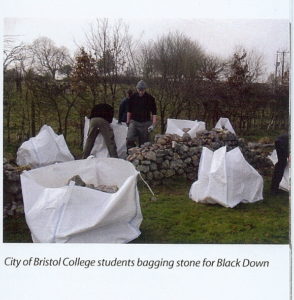The Darent Valley Landscape Partnership Scheme (LPS) area follows the river Darent from its source springs in the Weald to its confluence with the river Thames near Dartford. This project required the production of a single Landscape Character Assessment for the LPS area, and the identification of a series of Landscape Character Areas which reflect the changing stages of the river and its surroundings.  The Plan contains a vision for each Landscape Character Area, and a series of practical project proposals and opportunities to make that vision a reality. The Plan was part of a successful First Round bid for Heritage Lottery Funding under the Landscape Partnership Scheme.
The Plan contains a vision for each Landscape Character Area, and a series of practical project proposals and opportunities to make that vision a reality. The Plan was part of a successful First Round bid for Heritage Lottery Funding under the Landscape Partnership Scheme.
Category: National Lottery Heritage Fund
Strategic Landscape Enhancement Plan for the Darent Valley, Kent
Training in the Methodology and Practical Application of Landscape Character AssessmentDelivered through the ‘Up on the Downs’ Landscape Partnership Scheme, Kent (2014)
Fiona prepared and presented a two-day training course for Local Authority Planning Officers and environment professionals from AONBs, Natural England and other organisations. The course covered a range of topics, including: introduction to landscape character assessment; the methodology for landscape character assessment; the latest guidelines for landscape and visual impact assessment, and using landscape character assessment when responding to planning applications. The course included presentations, practical fieldwork and workshop sessions. Following the course, feedback was very positive, and delegates felt much more confident using landscape character assessment and landscape and visual impact assessment in their daily work.
Landscape Character Assessment for the Dearne Valley Green Heart Landscape Partnership(2012)
This project formed part of a successful bid for Heritage Lottery funding under the Landscape Partnership scheme. It was commissioned by the RSPB on behalf of the Dearne Valley Green Heart Landscape Partnership. The Landscape Character Assessment describes the landscapes of the Dearne Valley, with particular emphasis on their rich ecology, heritage and industrial archaeology. Current threats to the landscape are identified, along with opportunities to protect, ‘manage and plan’ to enhance the landscape under the bid’s key themes of Industrial Heritage, Biodiversity and Socio-Economic impact.
Archaeological Management Plan for Black Down and Burrington Combe, Mendip Hills AONBWith University of Leicester Archaeological Services (2010)

The project area included an extensive Scheduled Monument containing archaeological features dating from the Bronze Age to the Second World War. The majority of the area is also designated SSSI and is managed under Higher Level Stewardship (HLS). High levels of recreation and changing land cover (particularly increased bracken) were causing extensive damage to archaeological features, so it was necessary to find an acceptable balance between archaeological, recreation and conservation interests.

A condition assessment of the archaeology was undertaken by ULAS and a number of management recommendations were made. Some of these recommendations (such as stone-pitching the eroded ground around a trig point, thereby protecting the underlying Bronze-Age barrow from further damage) have already been carried out as special projects under HLS with involvement from local community volunteers. Bracken clearance of the most sensitive features is also being carried out under HLS. Other recommendations, such as the provision of interpretation panels and the re-routing of footpaths have been incorporated into a successful Heritage Lottery Fund bid.




